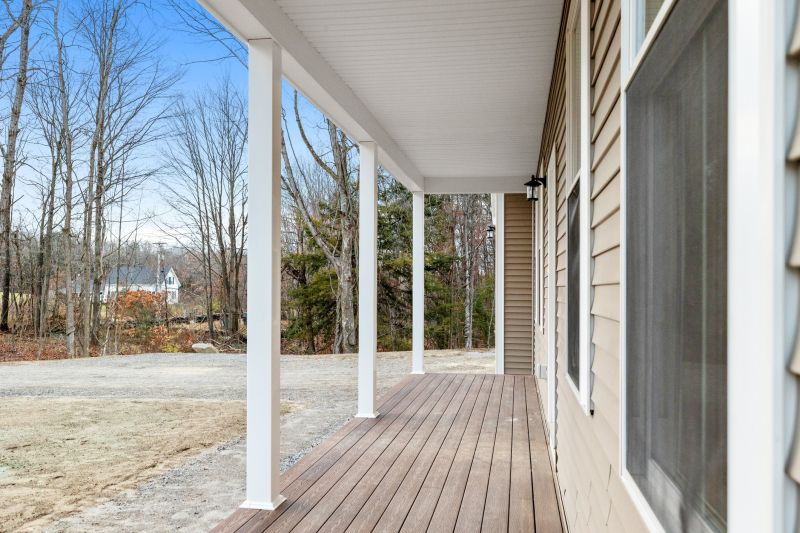Expert Picks for Column Repair Supplies to Enhance Building Stability
Find premium products recommended by professionals for restoring and maintaining the strength of your columns.
 Column repairs are a common necessity in both residential and commercial spaces, especially in structures with decorative or structural columns that may experience wear, damage, or deterioration over time. Selecting the right products for column repairs involves understanding various repair materials, reinforcement options, and finishing solutions that can restore both the appearance and stability of columns. From patching compounds and epoxy resins to reinforcement wraps and decorative coverings, there is a wide array of products designed to address different types of damage and repair needs.
Column repairs are a common necessity in both residential and commercial spaces, especially in structures with decorative or structural columns that may experience wear, damage, or deterioration over time. Selecting the right products for column repairs involves understanding various repair materials, reinforcement options, and finishing solutions that can restore both the appearance and stability of columns. From patching compounds and epoxy resins to reinforcement wraps and decorative coverings, there is a wide array of products designed to address different types of damage and repair needs.
Top Overall Option
Multi-Purpose Column Repair Kit
A versatile repair kit designed to address a variety of column damage types, including cracks, chips, and surface deterioration. It typically includes epoxy resins, patching compounds, and finishing tools, making it suitable for both concrete and stone columns. Its ease of use and comprehensive contents make it a popular choice for DIY enthusiasts and professionals alike.
Types of Products For Column Repairses
Epoxy Adhesives and Resins
Used for bonding, filling, and consolidating damaged areas, providing strong adhesion and structural support.
Concrete Patch Compounds
Designed to fill cracks, chips, and surface imperfections on concrete columns, restoring surface integrity.
Fiber Reinforced Wraps
Offers additional strength by wrapping around columns, ideal for structural reinforcement.
Surface Finishes and Sealers
Applied to improve appearance and protect repaired surfaces from environmental damage.
Wood Filler and Repair Putty
Suitable for wooden columns, filling gaps, cracks, and surface damage effectively.
Stone Repair Mortars
Specialized mortars for restoring stone columns, matching natural textures and colors.
Reinforcement Meshes
Metal or fiberglass meshes used to reinforce large cracks or structural weaknesses.
Decorative Coverings
Materials like veneers or decorative panels to enhance appearance after repairs.
Waterproofing Products
Prevent moisture ingress that can cause further damage to repaired columns.
Anchors and Bolts
Used to secure loose or unstable columns to their foundation or structure.
Popular Choices
Widely used for quick fixes on cracks and surface damage, compatible with various materials.
Commonly chosen for filling larger cracks and surface imperfections in concrete columns.
Popular for providing additional structural support to compromised columns.
Used frequently to seal repaired surfaces and prevent future damage.
A go-to choice for restoring wooden columns with surface cracks or chips.
Preferred for restoring historic or decorative stone columns.
Commonly selected for large-scale structural reinforcement projects.
Popular for aesthetic upgrades after structural repairs are completed.
Frequently used to protect repaired columns from moisture-related deterioration.
Often chosen to stabilize loose or leaning columns securely.
Proper repair products not only help in fixing cracks, chips, or structural weaknesses but also ensure that the repaired area maintains its integrity and visual appeal. For instance, epoxy consolidants can be used to stabilize crumbling or spalling concrete columns, while fiber-reinforced wraps provide additional strength for compromised columns. Surface finishes and paints can then be applied to blend repairs seamlessly with the existing structure, maintaining aesthetic consistency.
When choosing products for column repairs, it is essential to consider the specific material of the column, whether concrete, wood, or stone, as different materials require different repair approaches. Durability, ease of application, compatibility with existing surfaces, and curing time are also important factors. Additionally, some repair products are formulated to be more flexible or resistant to environmental factors such as moisture or temperature changes, which can influence long-term performance.
Overall, the goal is to select repair products that are effective, durable, and suitable for the specific repair scenario. Proper application and adherence to manufacturer instructions are crucial for achieving optimal results. Whether performing minor cosmetic fixes or addressing significant structural issues, the right products can facilitate a safer and more aesthetically pleasing outcome for any column repair project.
Key Buying Considerations
- Material Compatibility: Ensure the repair product is suitable for the column's material, whether concrete, wood, or stone.
- Type of Damage: Identify whether the damage is superficial, structural, or a combination to select appropriate repair solutions.
- Ease of Application: Consider whether the product is user-friendly for DIY projects or requires professional application.
- Curing Time: Check the drying and curing times to plan your repair schedule accordingly.
- Durability: Look for products designed to withstand environmental factors relevant to the location, such as moisture or temperature fluctuations.
- Flexibility: For columns subject to movement or slight shifts, choose products that offer some flexibility.
- Finish Quality: Decide if the repair needs to be seamless or if surface finishing and painting are required afterward.
- Environmental Resistance: Consider resistance to water, UV rays, or chemicals if applicable.
- Compatibility with Existing Finishes: Ensure the repair materials can be painted or finished to match existing surfaces.
- Cost and Budget: Balance the quality and features of the product with your budget constraints.
- Manufacturer Instructions: Read and follow application guidelines carefully for optimal results.
- Long-Term Performance: Select products with proven longevity and maintenance requirements.
- Environmental Safety: Use products that do not emit harmful fumes or residues if working indoors.
- Availability: Choose products that are readily available for timely repairs.
- Additional Reinforcement Needs: Assess whether additional supports like meshes or anchors are necessary for your repair scope.
This page contains affiliate links. We may earn a commission if you make a purchase through these links at no additional cost to you.
